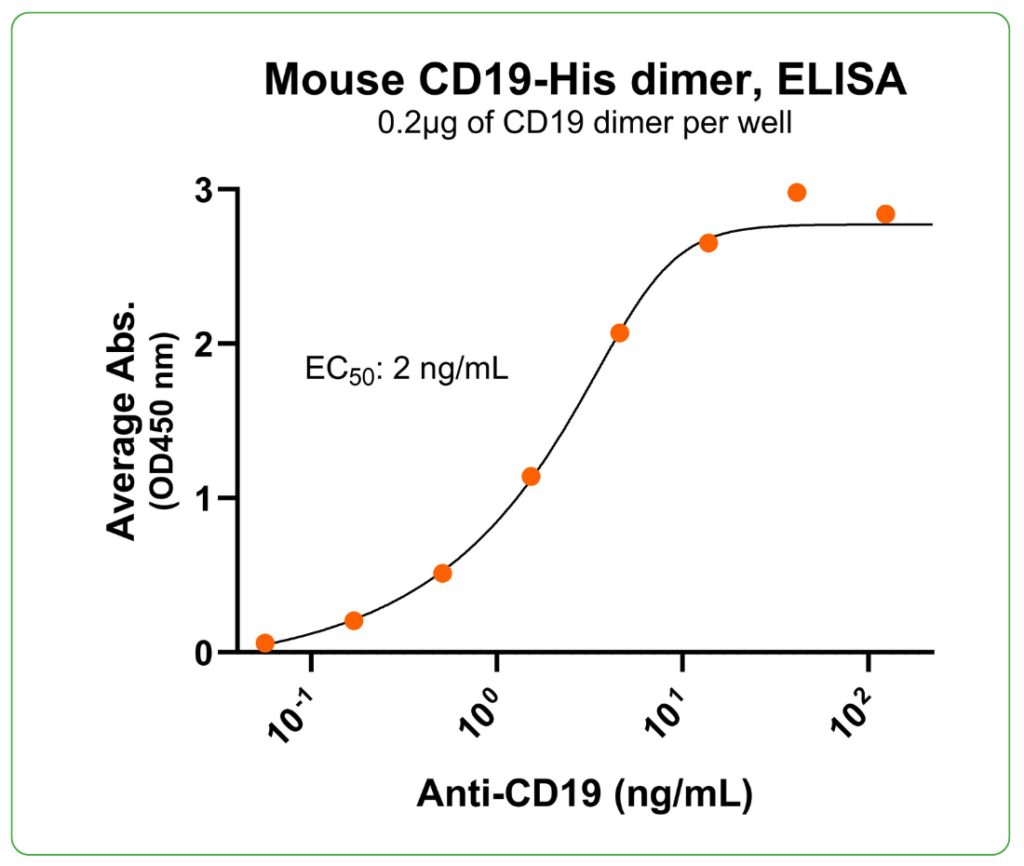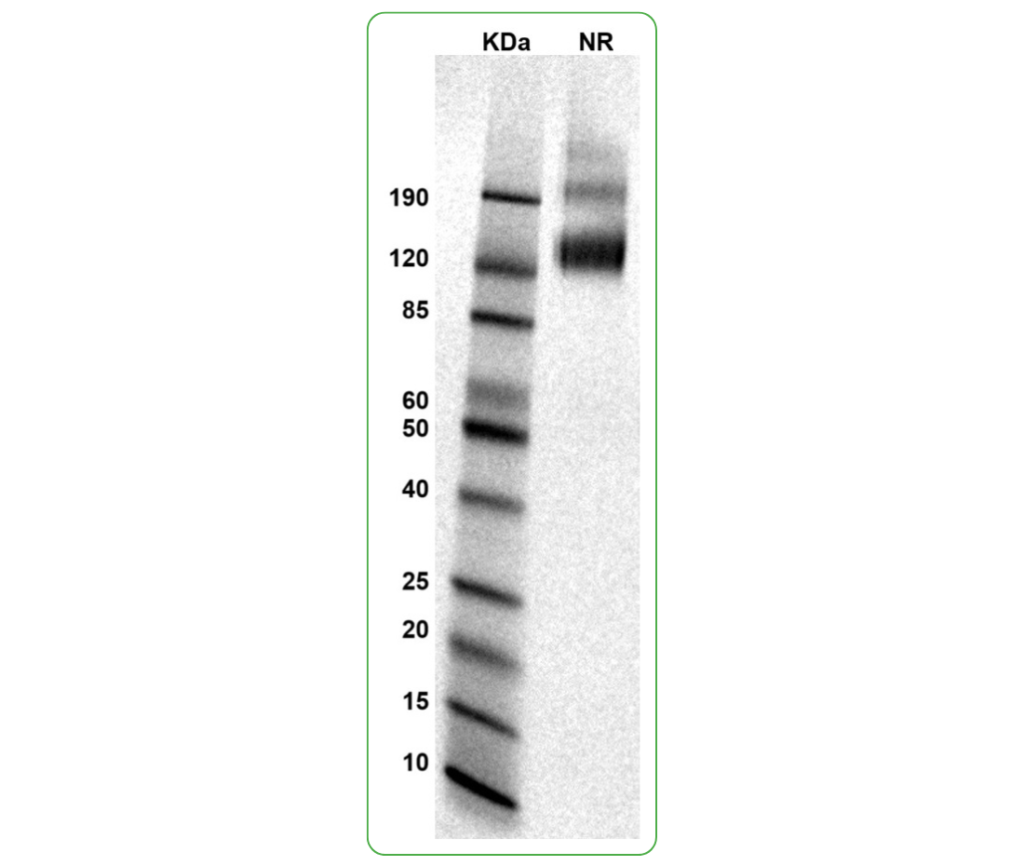Bioactive, Recombinant Mouse CD19 Protein Dimer, His Tag
| Product Code | CSP-124-01 |
| Expression Host | HEK293T |
| Verified Applications | ELISA for CD19-specific antibody binding assays. |
| Suggested Applications | SPR & BLI for CD19 -specific antibody binding assays. Animal immunization, RUO. |
| Purity | Greater than 90% dimer form as determined by SDS-PAGE under non-reducing condition |
| Amino Acid Range | R19-G287 |
For Research Use Only (RUO)
Price: $125.00
Price: $195.00
Price: $350.00
Price: $750.00
Price: $2,500.00
Bioactivity – Antibody Binding
Immobilized mouse CD19-His dimer protein (CSP-124-01) at 2 μg/mL (100 μL/well) can bind anti-mouse CD19 monoclonal antibody with half maximal effective concentration (EC50) range of 1-4 ng/mL (QC tested).
SDS-PAGE
MW: Molecular Weight marker reduced condition
CD19 dimer under non-reduced condition
Specifications
Formulation: 0.22μm filtered PBS, pH 7.4
Shipping: Frozen Dry Ice
Storage: -80°C
Mouse CD19 (Cluster of Differentiation 19) is a Type I transmembrane glycoprotein in the immunoglobulin superfamily. It is also known as B-Lymphocyte Surface Antigen B4, B4, CVID3, CD19 molecule, B-lymphocyte antigen CD19, and T-Cell Surface Antigen Leu-12. This recombinant CD19 protein is a cis-dimer protein (CSP-124-01) and contains a CD19 extracellular domain (UniProt# P25918, amino acids Arg19-Gly287) fused with a dimer motif followed by a His tag at the C-terminus. This dimeric protein is expressed in HEK293 cells and is bioactive. It also binds CD19-specific antibodies. This CD19 dimer can be used as an antigen for in vitro assays and antibody screening, and an immunogen for immunization to generate antibodies targeting more conformational epitopes.
Protein Name: CD19
UniProt #: P25918
Predicted Molecular Weight: 75 kDa
SDS PAGE Molecular Weight: The migration range of the dimer protein with glycosylation under non-reducing condition is 120 to 190 kDa on SDS-PAGE.
Protein Construct: CD19 protein dimer contains a CD19 extracellular domain (UniProt# P25918) fused with a dimer motif followed by a His tag at the C-terminus.
Background
Mouse Cluster of Differentiation 19 (CD19) is a Type I transmembrane glycoprotein in the immunoglobulin superfamily. CD19 is also known as B-Lymphocyte Surface Antigen B4, CVID3, B-lymphocyte antigen CD19, and T-Cell Surface Antigen Leu-12. CD19 is expressed on B cells throughout B cell development, but lost in plasma cells, and is also expressed on follicular dendritic cells. CD19 contains two extracellular C2-set Immunoglobulin-like (Ig-like) domains and a cytoplasmic tail that is highly conserved among mammalian species. CD19 can form multimolecular complexes with CD21 and CD81, but forming these complexes is not required for CD19 signal transduction. Mutations on CD19 are associated with severe immunodeficiency syndromes. CD19 is highly expressed on B cell cancers such as B cell lymphomas, acute lymphoblastic leukemia, and chronic lymphocytic leukemia.
Alternate Names: B-Lymphocyte Surface Antigen B4, B4, CVID3, CD19 molecule, B-lymphocyte antigen CD19, T-Cell Surface Antigen Leu-12


